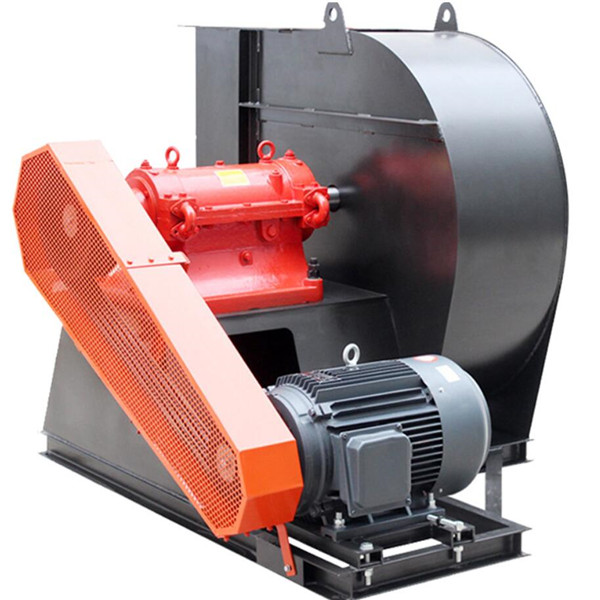The centrifugal fan is a machine that relies on the input mechanical energy to increase the gas pressure and discharge the gas. It is a driven fluid machine.
Centrifugal fans are mainly used for indoor ventilation or conveying air in general factories and large buildings, and other non-spontaneous, non-explosive, non-volatile,
It is harmless to the body and non-corrosive gas to steel. The centrifugal fan has the characteristics of not easy to accumulate dust and wear resistance.
It is suitable for discharging gas containing dust, wood chips, fine fibers, etc.
(If it contains hard particles, a dust removal device must be added in front of the fan), which can be used as a general fan for ventilation.
Structure: The casing and the impeller are all made of glass fiber reinforced plastic, which is pressure-resistant, corrosion-resistant and explosion-proof.

Features:
1. The ventilator is divided into three pressure levels: high pressure P>3000Pa, medium pressure 1000≤P≤3000Pa, and low pressure P<1000Pa. When selecting, different types of ventilators should be selected according to the physical and chemical properties of the gas to be transported, as well as different uses.
2. When selecting a ventilator, the leakage loss of the piping system, calculation error, and the negative deviation of the actual air volume and air pressure of the ventilator should be considered. Generally, the safety factor of the air volume is 1.05~1.1 and the wind pressure is 1.10~1.15. However, it is not appropriate to use an excessive safety factor to prevent the fan from running in a low-efficiency area for a long time.
3. Pay attention to the matching relationship between the resistance characteristics of the pipe network and the characteristics of the fan. In order to make the ventilator run stably, the ventilator should work near its highest efficiency point, and the working point of the ventilator is located on the right side of the full pressure peak point in the performance curve (that is, on the side of large air volume, and is generally located at 80% of the full pressure peak value. ). The efficiency of the fan selected in the design condition should not be lower than 90% of the maximum efficiency of the fan.
4. When using a variable frequency fan, the total pressure loss calculated by the system should be the rated wind pressure, but the fan motor power should be added 15%~20% to the calculated value.
5. When the working conditions of the fan (such as gas temperature, atmospheric pressure, etc.) are inconsistent with the working conditions of the fan sample, the fan performance should be corrected.
Specifications :
|
Type |
Power (KW) |
Flow Rate (M3/h) |
Total Pressure (Pa) |
Noise≤DB(A) |
Rotate Speed (r/min) |
Voltage (V) |
|
HT-2 |
0.18 |
406 |
450 |
72 |
2840 |
380 |
|
HT-3 |
0.25 |
504 |
860 |
75 |
2840 |
380 |
|
HT-4 |
0.37 |
660 |
850 |
76 |
2840 |
380 |
|
HT-5 |
0.55 |
850 |
1020 |
76 |
2840 |
380 |
|
HT-6 |
0.75 |
1200 |
1210 |
78 |
2840 |
380 |
|
HT-7 |
1.1 |
1650 |
1260 |
80 |
2840 |
380 |
|
HT-8 |
1.5 |
2300 |
1400 |
82 |
2840 |
380 |
|
HT-9 |
2.2 |
2800 |
1650 |
82 |
2840 |
380 |
|
HT-10 |
3 |
3000 |
1700 |
82 |
2840 |
380 |
|
HT-11 |
4 |
3200 |
1750 |
85 |
2840 |
380 |
|
HT-12 |
5.5 |
3500 |
1800 |
85 |
2840 |
380 |
can not be empty
The E-mail format is not correct
can not be empty
can not be empty






















